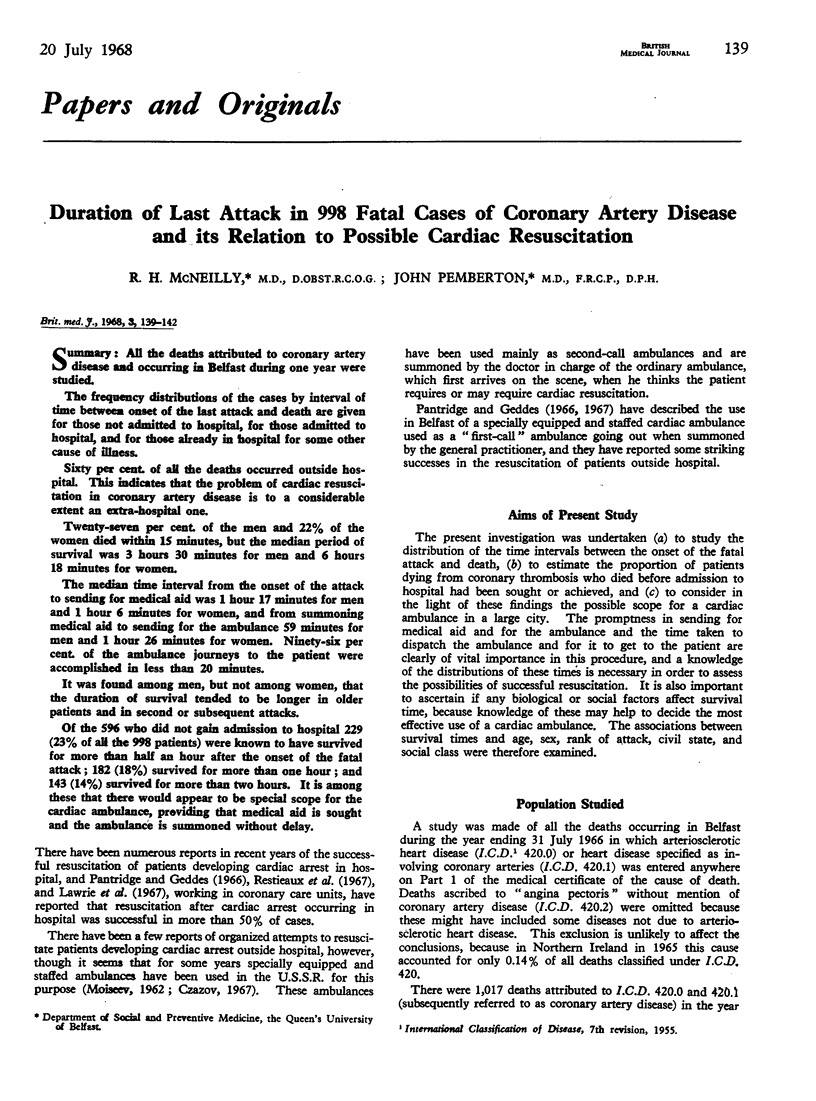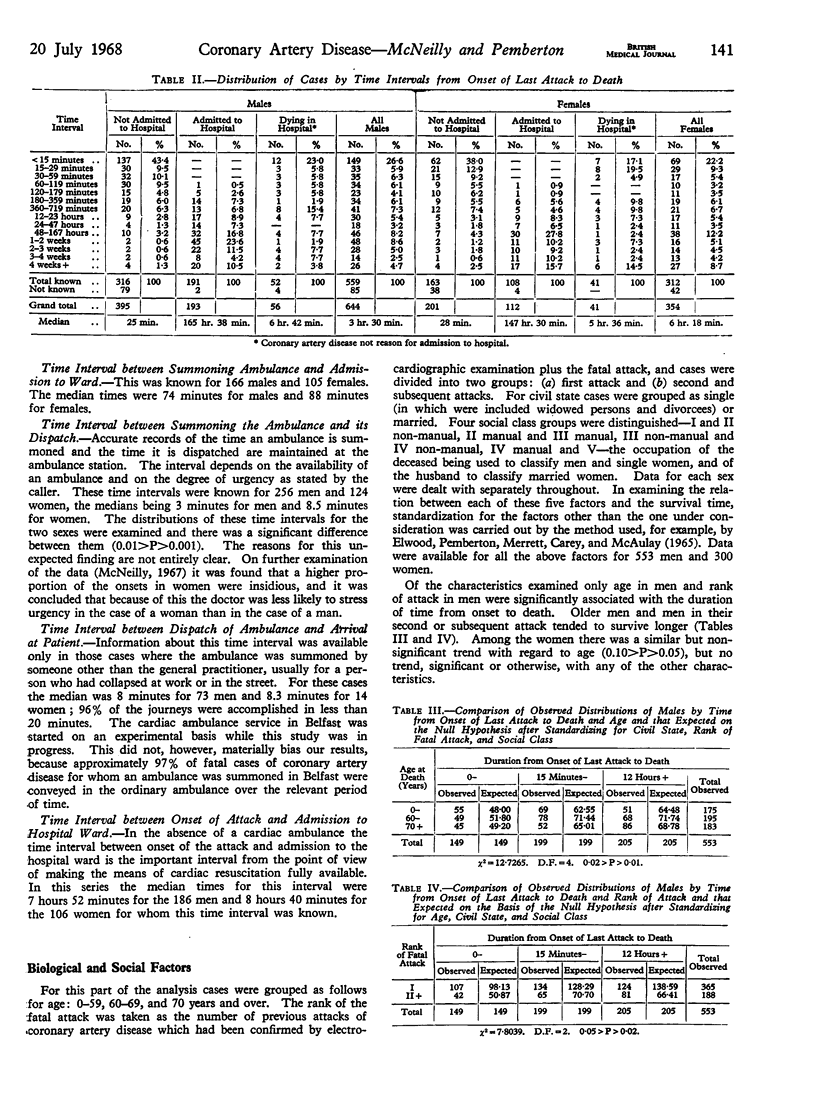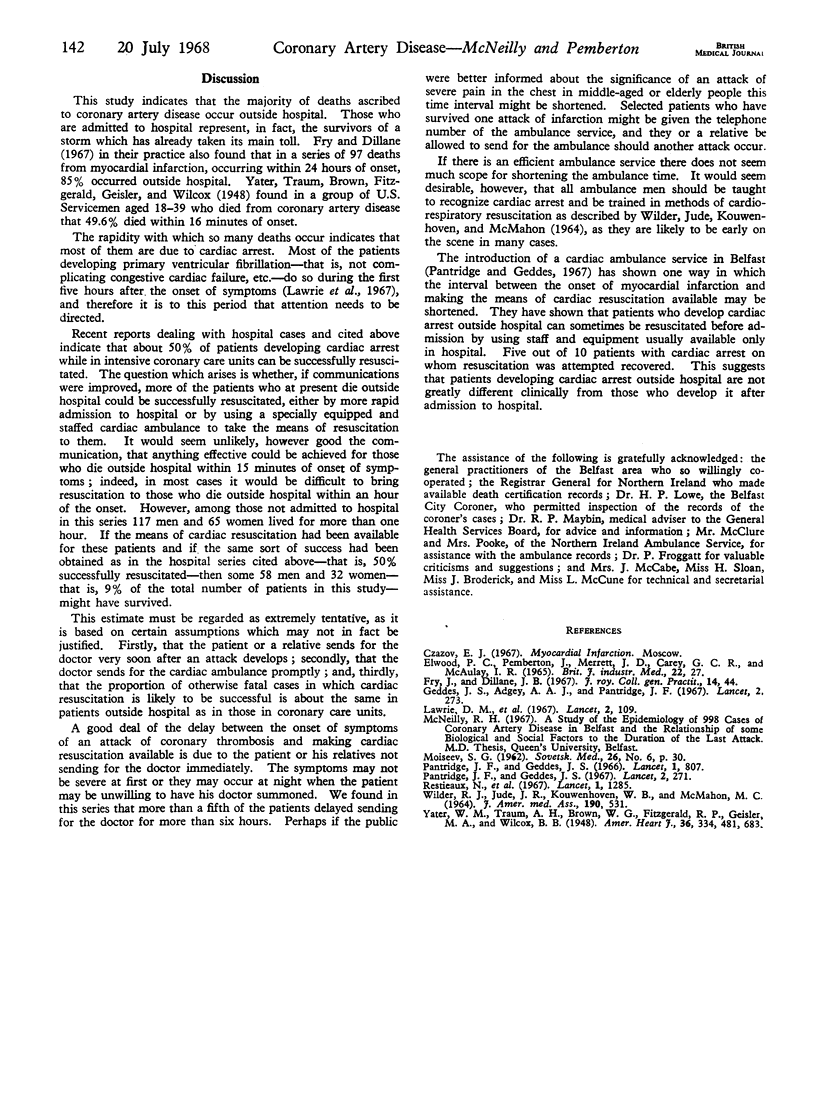Abstract
All the deaths attributed to coronary artery disease and occurring in Belfast during one year were studied.
The frequency distributions of the cases by interval of time between onset of the last attack and death are given for those not admitted to hospital, for those admitted to hospital, and for those already in hospital for some other cause of illness.
Sixty per cent. of all the deaths occurred outside hospital. This indicates that the problem of cardiac resuscitation in coronary artery disease is to a considerable extent an extra-hospital one.
Twenty-seven per cent. of the men and 22% of the women died within 15 minutes, but the median period of survival was 3 hours 30 minutes for men and 6 hours 18 minutes for women.
The median time interval from the onset of the attack to sending for medical aid was 1 hour 17 minutes for men and 1 hour 6 minutes for women, and from summoning medical aid to sending for the ambulance 59 minutes for men and 1 hour 26 minutes for women. Ninety-six per cent. of the ambulance journeys to the patient were accomplished in less than 20 minutes.
It was found among men, but not among women, that the duration of survival tended to be longer in older patients and in second or subsequent attacks.
Of the 596 who did not gain admission to hospital 229 (23% of all the 998 patients) were known to have survived for more than half an hour after the onset of the fatal attack; 182 (18%) survived for more than one hour; and 143 (14%) survived for more than two hours. It is among these that there would appear to be special scope for the cardiac ambulance, providing that medical aid is sought and the ambulance is summoned without delay.
Full text
PDF



Selected References
These references are in PubMed. This may not be the complete list of references from this article.
- Geddes J. S., Adgey A. A., Pantridge J. F. Prognosis after recovery from ventricular fibrillation complicating ischaemic heart-disease. Lancet. 1967 Aug 5;2(7510):273–275. doi: 10.1016/s0140-6736(67)90111-0. [DOI] [PubMed] [Google Scholar]
- Lawrie D. M., Greenwood T. W., Goddard M., Harvey A. C., Donald K. W., Julian D. G., Oliver M. F. A coronary-care unit in the routine management of acute myocardial infarction. Lancet. 1967 Jul 15;2(7507):109–114. doi: 10.1016/s0140-6736(67)92959-5. [DOI] [PubMed] [Google Scholar]
- Pantridge J. F., Geddes J. S. A mobile intensive-care unit in the management of myocardial infarction. Lancet. 1967 Aug 5;2(7510):271–273. doi: 10.1016/s0140-6736(67)90110-9. [DOI] [PubMed] [Google Scholar]
- Pantridge J. F., Geddes J. S. Cardiac arrest after myocardial infarction. Lancet. 1966 Apr 9;1(7441):807–808. doi: 10.1016/s0140-6736(66)91883-6. [DOI] [PubMed] [Google Scholar]
- Restieaux N., Bray C., Bullard H., Murray M., Robinson J., Brigden W., McDonald L. 150 Patients with cardiac infarction treated in a coronary unit. Lancet. 1967 Jun 17;1(7503):1285–1289. doi: 10.1016/s0140-6736(67)91589-9. [DOI] [PubMed] [Google Scholar]
- WILDER R. J., JUDE J. R., KOUWENHOVEN W. B., MCMAHON M. C. OF 153 ATTEMPTED--CARDIOPULMONARY RESUSCITATIONS BY TRAINED AMBULANCE PERSONNEL--NO FATAL INJURIES WERE PRODUCED. JAMA. 1964 Nov 9;190:531–534. [PubMed] [Google Scholar]


